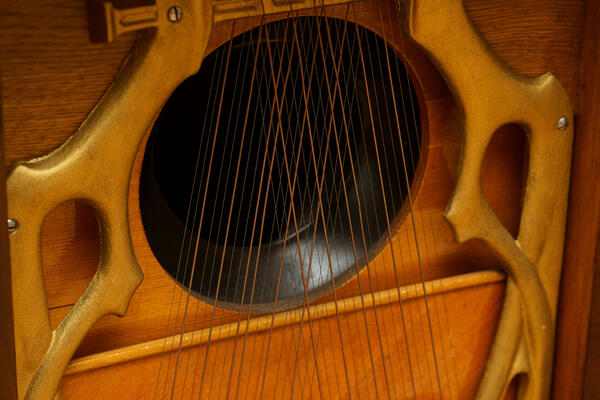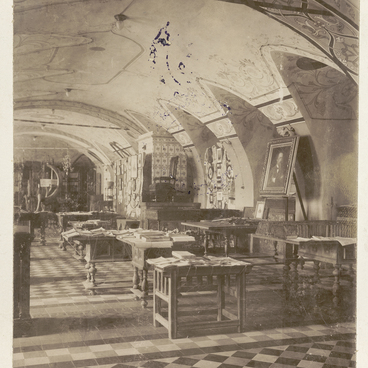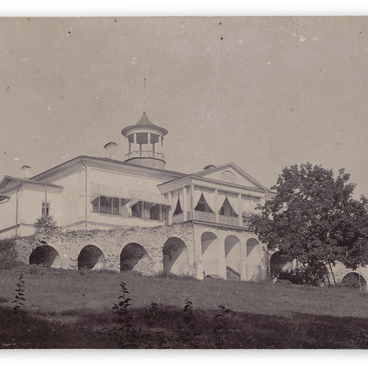In the late 19th — early 20th century Russian nobles equipped their mansions with new devices — phonographs and portable gramophones.
There is a portable Klingsor gramophone in an upright case displayed at the Karabikha museum-reserve of Nikolay Nekrasov. The model that had a solid casing in the form of a cabinet or a nightstand with doors and a lire-shaped reproducer with resonating strings was patented in 1908. There is a stamp reading “in-u. AUSL.PAT. Klingsor” on the inside of the lid.
The cabinet consists of two parts: the bottom part has a foldable lid supported by metal hinges. The outside of the lid is decorated with a metal plate with a handle. Inside the box there is a turntable for gramophone records with a speed regulator and a container for needles.
Below on the right, there is a removable hand for winding the mechanism.
The top compartment has two paneled doors with openwork decorations and beveled mirrors with a decorative slope. The right door has a metal lock plate. There is a latch on the inside of the left door.
Inside the case, there is a round wooden horn mouth with tuned strings of varying size. The panel has a lire-shaped stylized decoration and the name Klingsor at the bottom. At the top, the piece is decorated with a beveled cornice and a curved pediment.
This type of model in an upright case was originally produced in Germany. It continued to be produced in England until the 1920s. In Russia, Klingsor was one of the most popular companies producing mechanical devices and gramophones.
Music played an important role in the Nekrasov family in Karabikha. It could often be heard in the manor. Sofya Nekrasova, née Miller, the first wife of the poet’s brother Fyodor, was known for her love for music and played it a lot.
Nekrasov’s poems began to be put to music in the early 1850s. Karl Davydov, Alexander Dubuque, Cesar Cui, Modest Mussorgsky and Pyotr Tchaikovsky were among the most famous composers to do so.
The Karabikha museum houses 13
music notebooks featuring songs and vocal compositions with lyrics by Nikolay
Nekrasov. The notebooks were published during Nekrasov’s lifetime.





